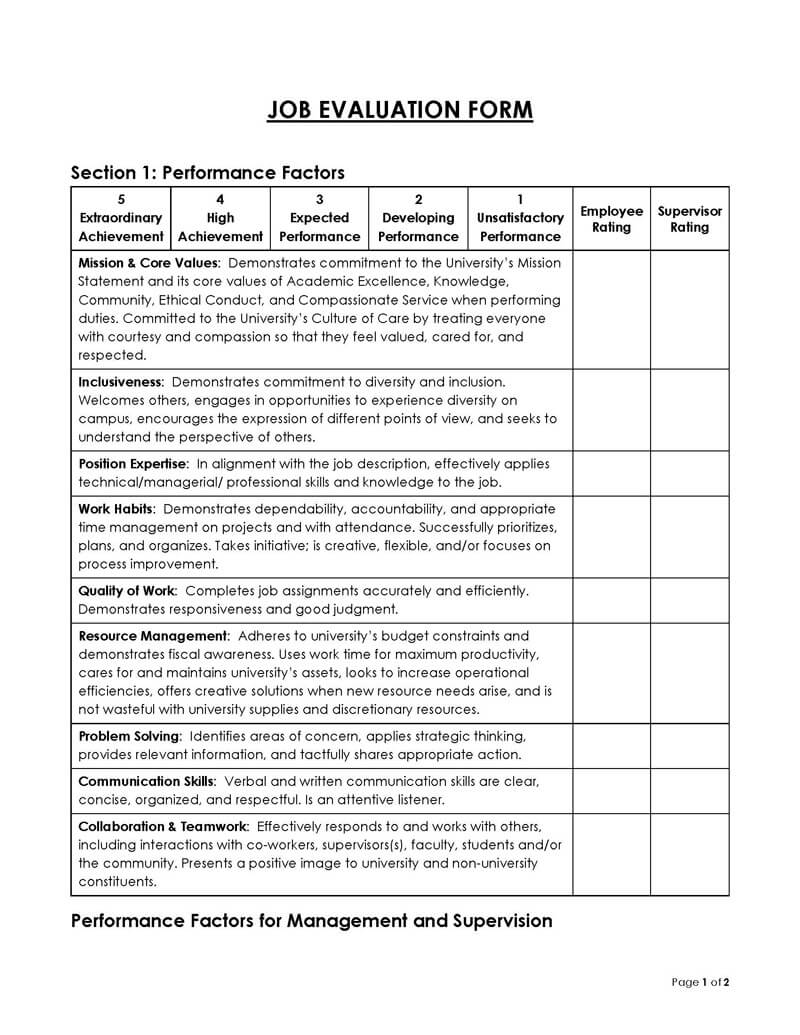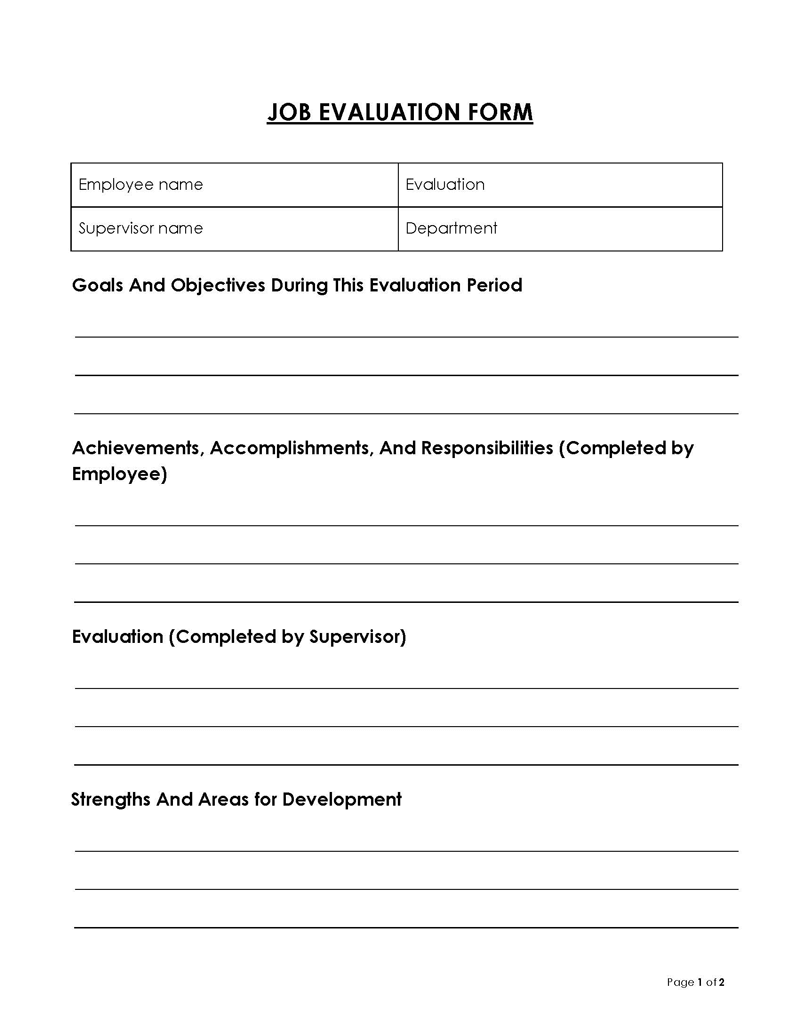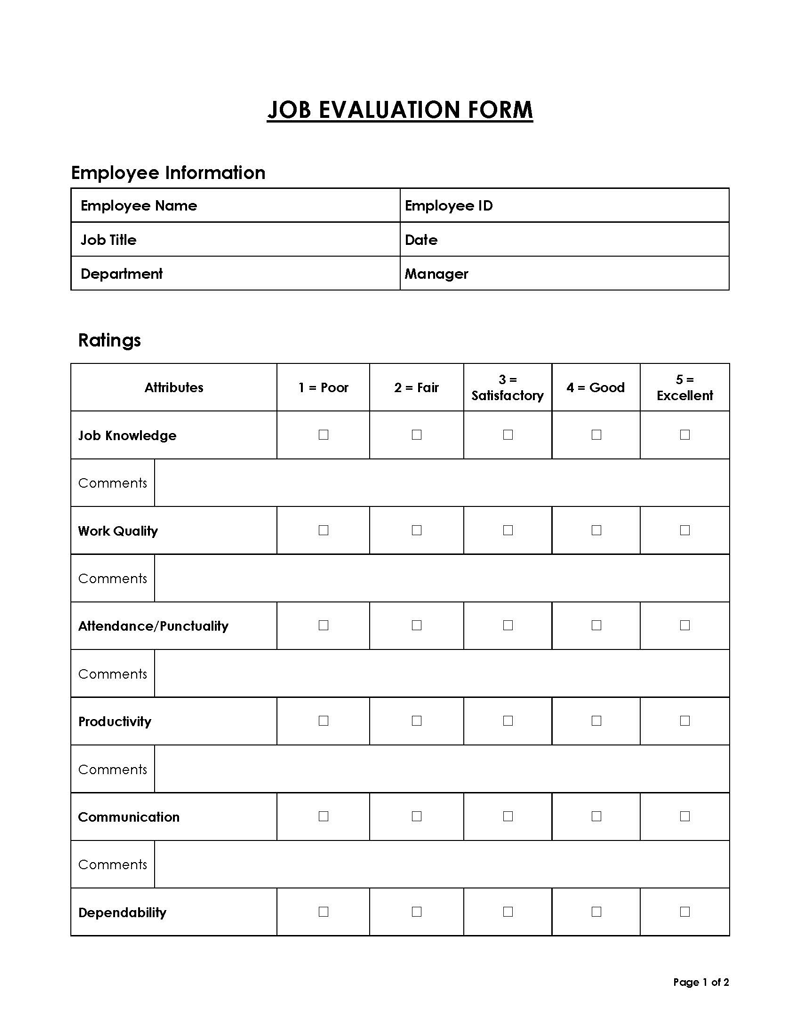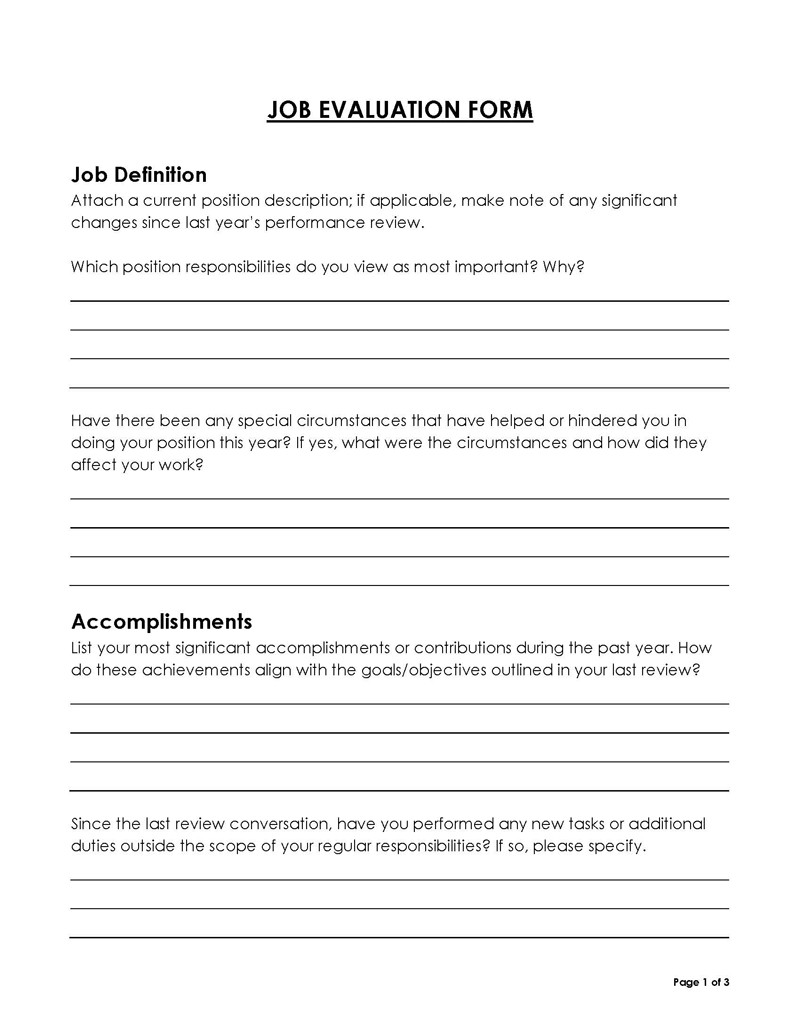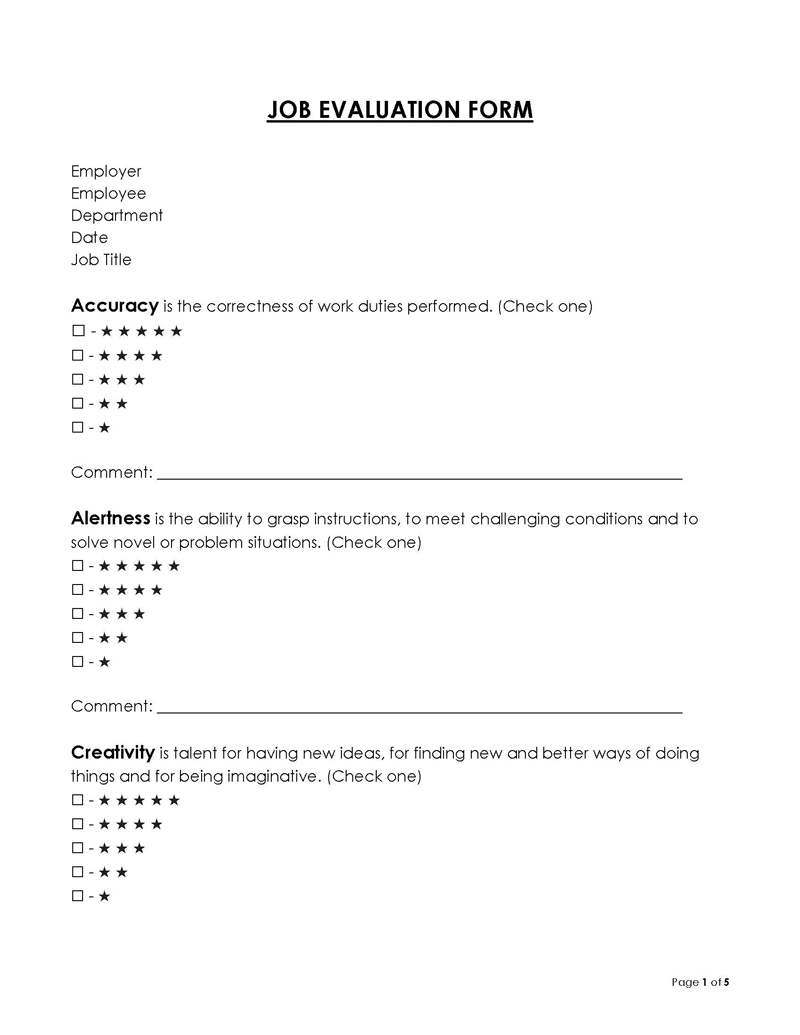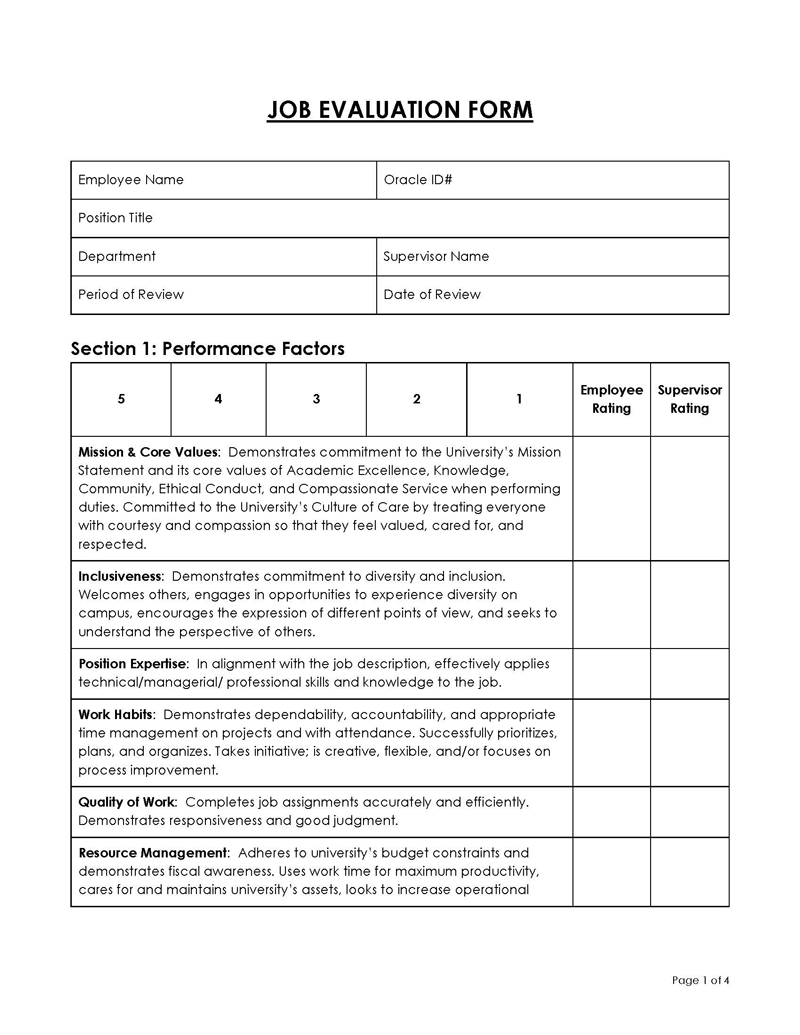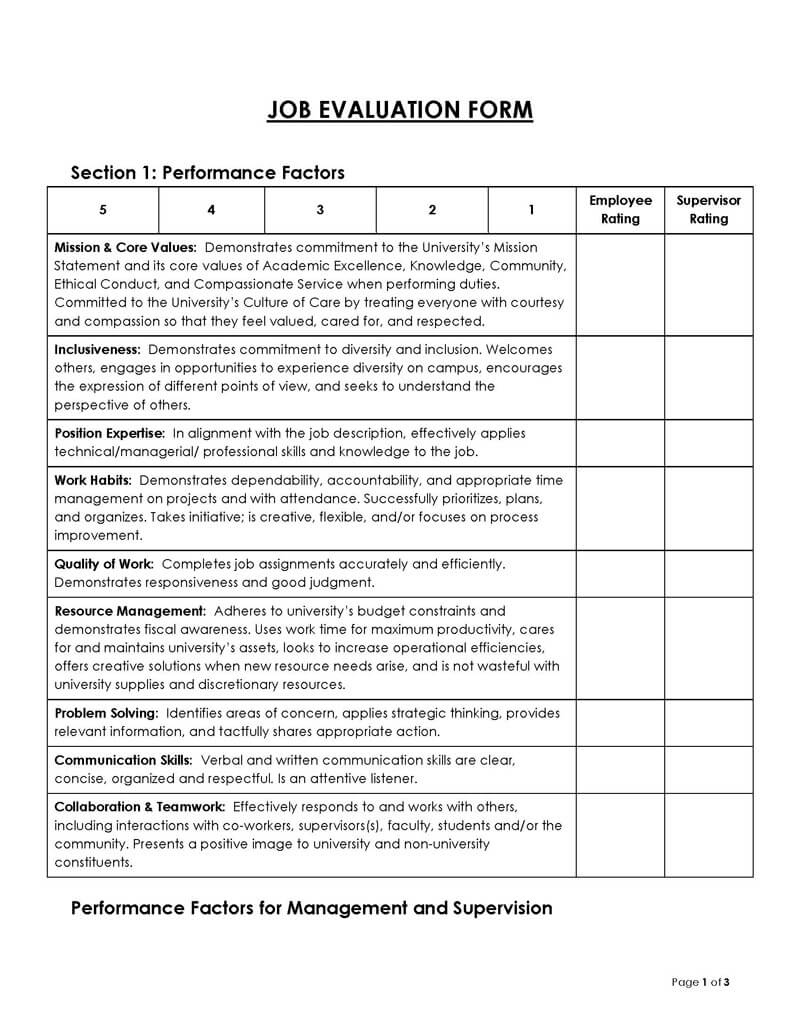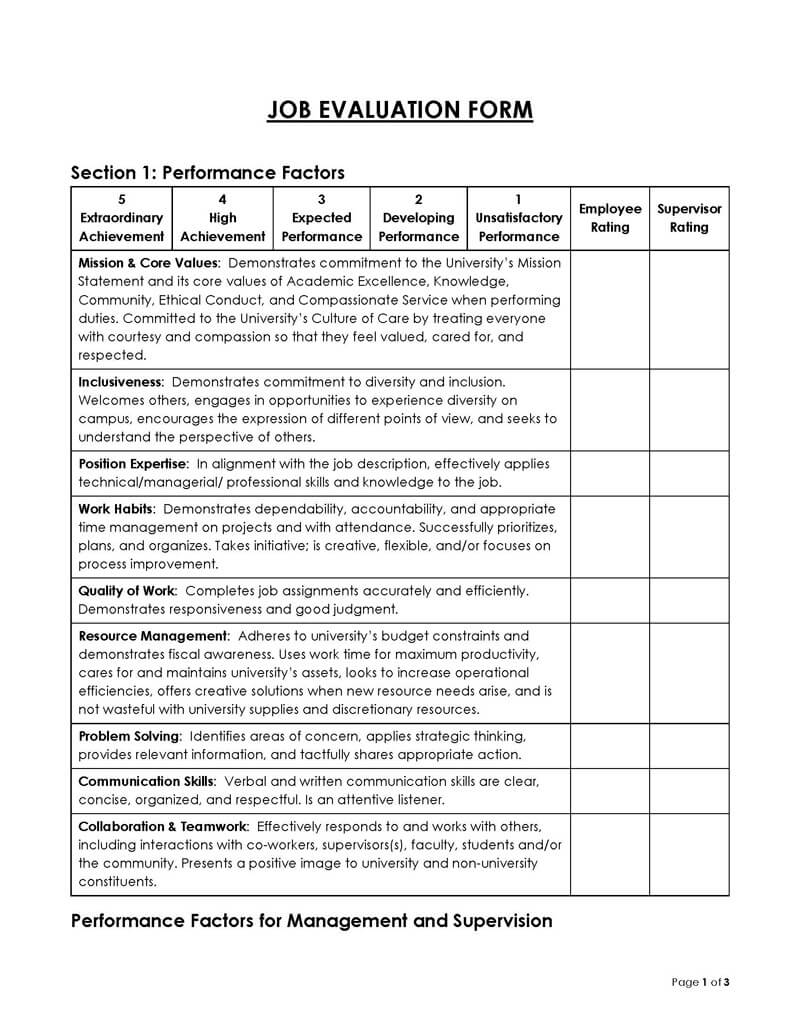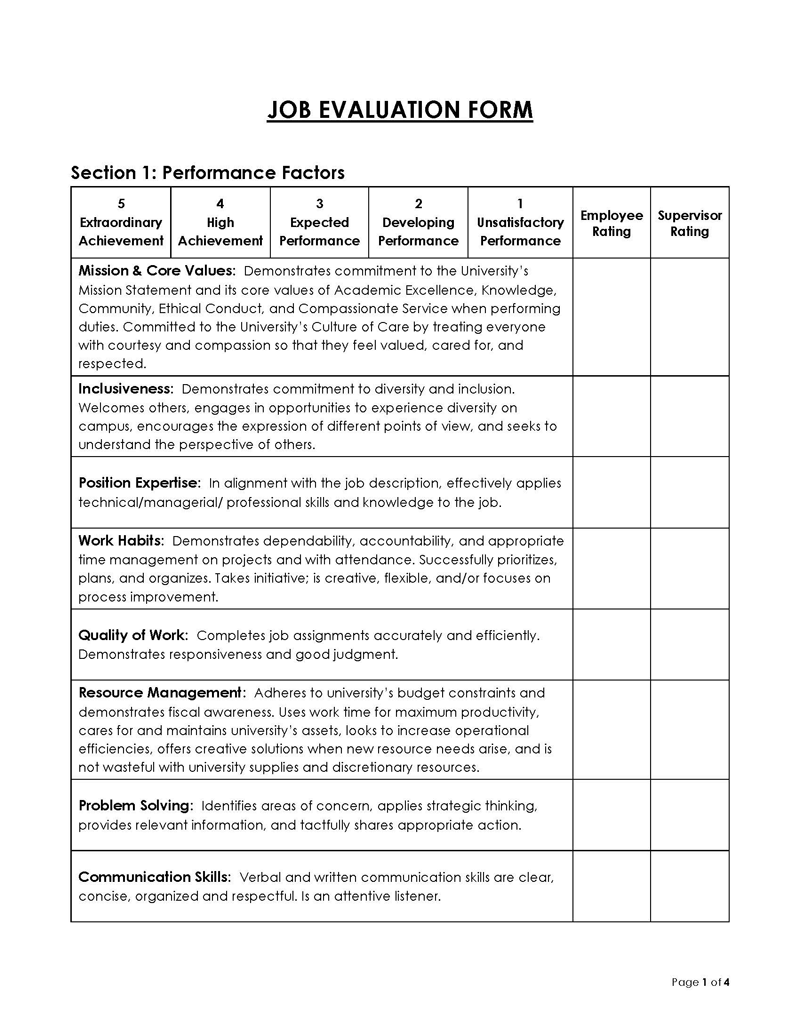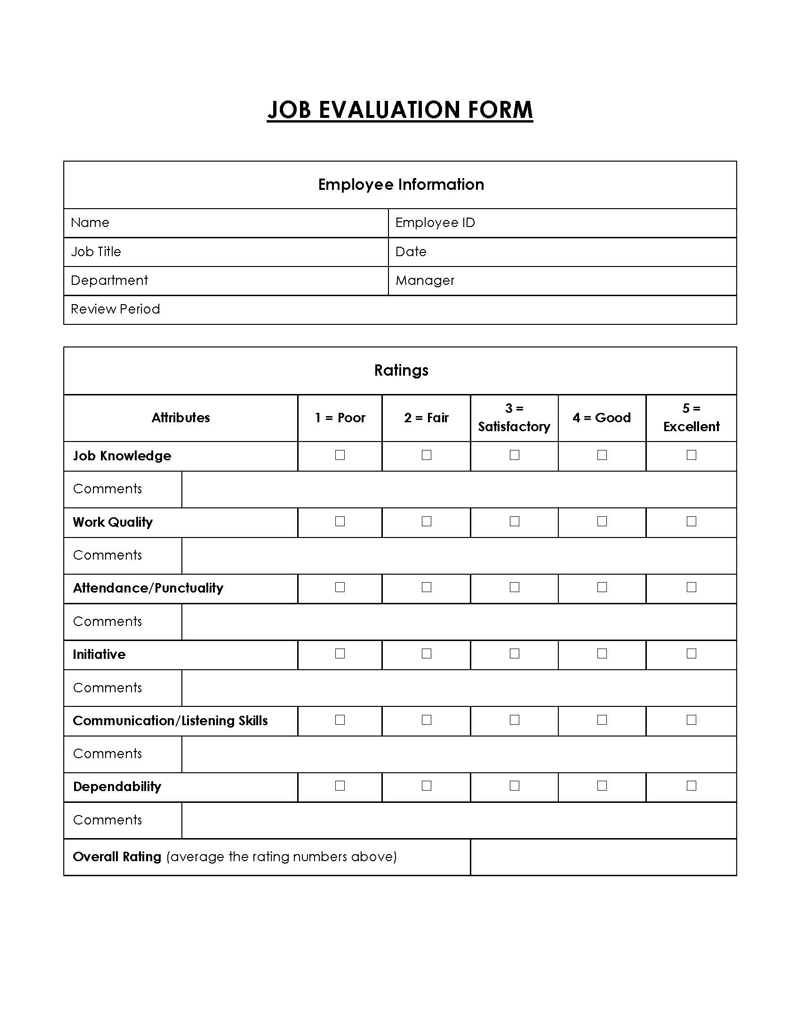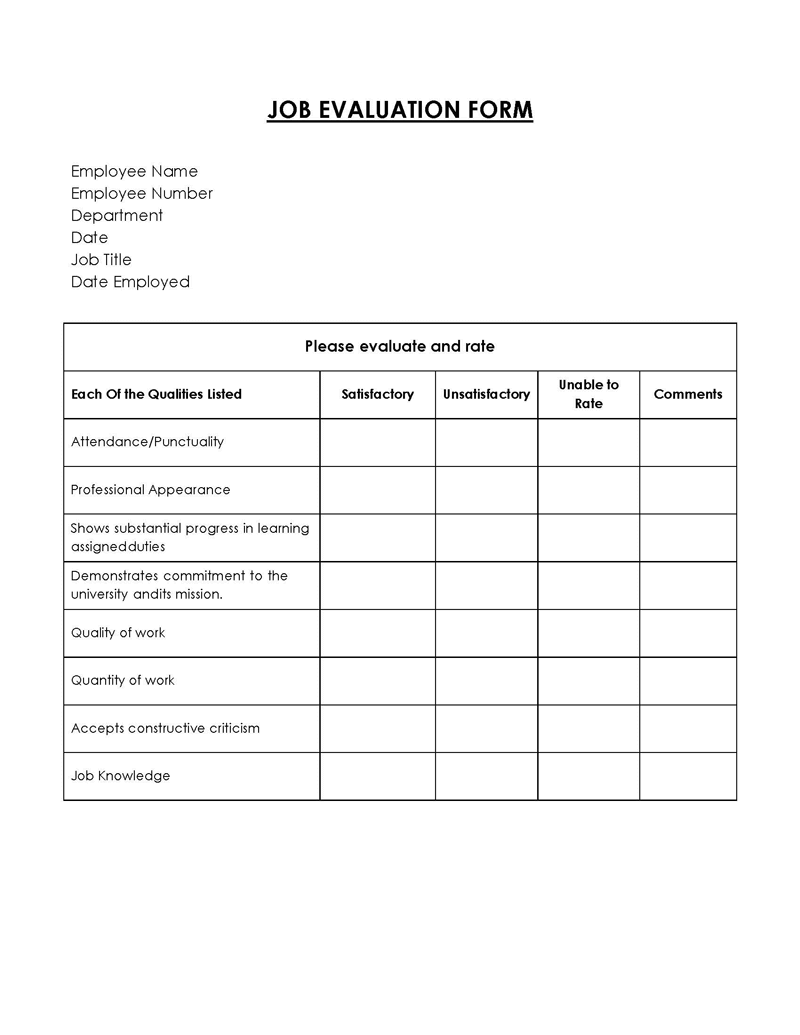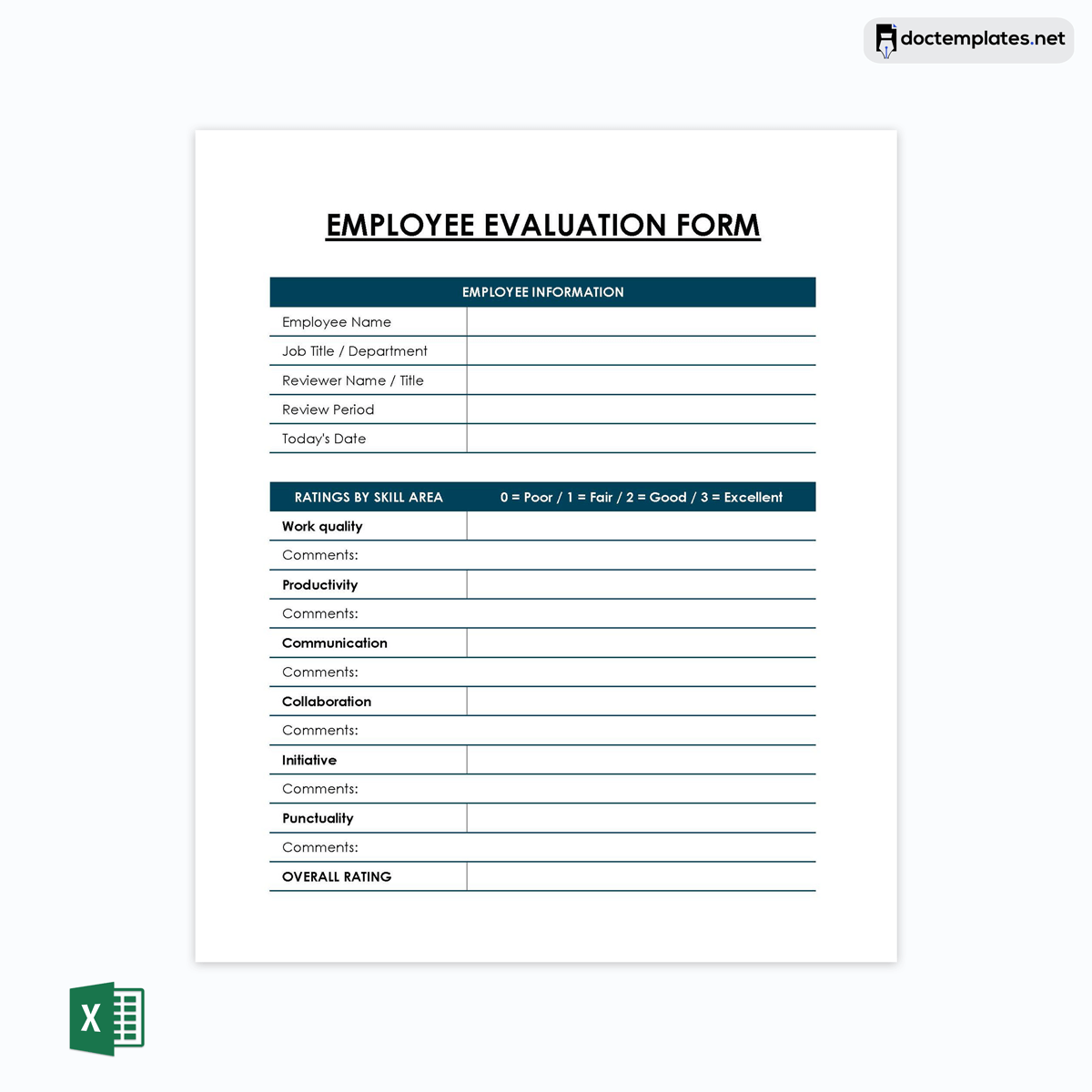The origin of job evaluation can be traced to the United States Civil Service Commission in 1871. However, it was not until the 1920s that the first point system was developed. In addition, the National War Labor Board advocated for the implementation of job evaluation to promote wage equality during World War II. Finally, in 1963, it was included in the constitution- The Equal Pay Act. The new law mandated that the equality of jobs should be measured based on responsibility, effort, and skill. The National Research Council conducted a job evaluation study in 1979 to find a solution to pay discrimination based on sex.
According to the study, female and minority-dominated jobs are often underpaid due to stereotypes and other factors. The report from the study indicates that job evaluation may be the key to ensuring women and other minority groups get fair wages for jobs.
Job evaluation is a complex process of estimating the value of different roles in a firm. The aim is to create wage equality- a fair payment structure. As a result, everyone is paid based on their worth and performance. The job evaluation form is the tool used to implement the complex process of determining the value of a job for the assignment of fair wages.
Templates of a Job Evaluation Form
The task of conducting a job evaluation can be challenging. Therefore, having a template can eliminate some of the stress associated with the process. This website offers free downloadable templates of job evaluation forms. You do not have to spend time creating a form from scratch. Instead, you can download the form templates, customize them, and use them for job evaluation.
Job evaluation is not the duty of one department; various groups work together to ensure the validity of the process. The HR (human resource), Union workers, commercial consultancy companies, and social partners are involved in the evaluation.
Therefore, it involves using internal and external data to determine the compensation for a job. Examples of job evaluation are:
- Single-position evaluations for new jobs
- Re-evaluation of jobs to ensure wages are fair or more competitive
- Organizational job evaluation to adjust the entire payment structure
Note: Performance appraisals (or performance evaluations) assess the outcome of an employee. On the other hand, job evaluation assesses the job position with no consideration of the person holding the position. Therefore, performance appraisals are tailored to a specific employer, while job evaluations are for specific or similar jobs.
Job evaluation helps the management to achieve wage equality. This article will cover the definition, methods, and steps to evaluate a job. In addition, free the templates will also be provided to help you make the process easier.
Statistical insights: The European Commission is proactive in its support for the implementation of job evaluation. Only 49% of European private companies adopt the job evaluation process. As a result, there are widespread unstructured payment practices and skill development for workers.
Objectives of Job Evaluation
The purpose of job evaluation is to identify the value of a position. However, the value may vary depending on time, location, and economic situations. Before implementing this process, you need to understand the objectives.
This will guide your actions in establishing wage equality. Here are the principal objectives of job evaluation:
- It is used to evaluate an individual’s job.
- It is a tool that can optimize employee productivity and satisfaction.
- It is a systematic method of describing and analyzing positions, putting them in groups, and determining their value by assessing duties, responsibilities, and outcomes.
- To rationalize the existing wage rate system or develop a system that allows for equity
- To justify the negotiation of pay rates when bargaining with a reputable union
- To implement a systemic, rational, and orderly structure of jobs dependent on their contribution to the company
- To ensure employees get equitable and fair compensation as it pertains to their duties
- To set similar pay rates for a job description across several organizations.
- Compliance with the equal pay regulations, which determines differences in pay in relation to a job description
- To promote equal pay for jobs of similar duties, effort, skill, and conditions by establishing a method to determine the differences objectively and accurately in job value.
- To identify the progress in the civil movement for all employees hoping to improve their compensation in the future.
5 Steps of Job Evaluation
Evaluating a job is a systematic process. It requires careful planning and organization. Here are the steps to evaluate a job effectively:
Step 1: Identify the purpose and scope of the job evaluation
The first step in the evaluation is to identify the purpose and scope. You may need to answer critical questions such as: “What is the coverage of the evaluation- a position, a department, or the whole organization? Is the purpose of the review for a new or existing job? Is the aim of evaluation growth or reduction in the budget? Therefore, you must have adequate information to determine the best method of the evaluation, the duration, and the appropriate parties to work with.
Step 2: Select the compensable factors
The second step involves identifying what the company pays for concerning a job. Again, compensable factors play significant roles in determining the hierarchy of jobs.
The following are compensable factors:
- Educational qualifications: The educational qualifications required for the job are one of the compensable factors.
- Level of experience: Most employers consider the experience required for a job to determine its worth. This puts the job in a different category from other jobs.
- Job responsibilities: The duties associated with the job are also a compensable factor.
- Working conditions: Working conditions, such as occupational hazards, determine how much you pay for a job.
- The complexity of duties: The amount allocated to a job may be influenced by the difficulty level involved in dispensing duty.
- Access to confidential information: Employees are exposed to varying degrees of sensitive information.
- Impact of mistakes and errors: Sometimes, mistakes happen, but it may be a disaster if it happens with specific jobs. Therefore, the consequences of mistakes with a job may determine how much significance the organization attaches to it.
- Physical and mental demands of the jobs: A job’s physical and mental demands influence how much you pay.
Step 3: Select an appropriate method
You must choose an appropriate method based on the defined purpose and scope. If you have answered the questions in step 1, you can better select the best job evaluation method.
Other factors that may influence the selection of methods include:
- The budget for the job evaluation: It requires financial dedication. Therefore, you must select an evaluation method based on the allocated amount for the process.
- Timeframe: Each evaluation method requires a different time frame to complete them. That is why you may need to select an evaluation technique based on the number of days they can spare.
- Size of employees: Another significant factor that may affect the choice of evaluation technique is the size of employees. Some methods are suitable for a large organization, while others are best for small organizations.
- Access to internal and external data: The job evaluation process requires data. Therefore, access to internal and external data must be considered when selecting evaluation methods.
Step 4: Compile the documents and data
Job evaluation requires the compilation of lots of data. However, obtaining the data may be challenging, and you may have to resort to questionnaires or third parties for information. Some of the information you need for a successful job evaluation include:
- Demographics of the workforce
- Market salary data
- Job descriptions and responsibilities
- Current salaries
- Company hierarchy/job class
Step 5: Test the method on a sample
Once you decide on the method to use for job evaluation, you need to test it. The test can be done on sample groups within the organization. This step is vital because it helps to reveal any inconsistency in the chosen method. As a result, you can expect an accurate result when applied to the primary target population. In addition, the method can be abandoned or adjusted depending on the result of the sample testing.
Different Methods of Job Evaluation
There are various methods of job evaluation. However, these methods revolve around data and comparison. Here are two broad methods you can use to do job evaluation:
Internal methods
The first broad classification of job evaluation methods is the internal method. This can further be categorized under quantitative and qualitative methods:
Qualitative methods
Qualitative methods are internal methods of job evaluation. Here are some of the techniques used for job evaluation:
- Ranking method/pair comparison ranking: Pair comparison is a simple qualitative method of job evaluation. In this method, jobs are paired and ranked. The higher the importance of a position to the company, the higher the ranking. However, the ranking method best applies to small organizations with less than 100 job positions. The pair comparison ranking is highly subjective; hence, used with other methods to eliminate errors.
- Job classification: Job classification is a qualitative method of job evaluation that is easy but highly subjective. First, the positions are classified according to a pre-determined rank. Examples of job classification include CEO, director, managing director, supervisor, etc. Next, the grades are created within a job group, such as marketing, sales, security, etc. After classification, the estimated impact on the company’s growth determines the compensation.
Quantitative methods
Quantitative methods are systematic investigations that involve collecting and analyzing quantifiable data. Here are the quantitative methods of job evaluation:
- Point-factor method: Point-factor method is arguably the best method for job evaluation. Factors like accountability, knowledge, and problem-solving skills are used to determine the rank of jobs. Points are assigned to the factors, and the total points indicate the rank. The steps involved in this complex quantitative method are:
-The jobs are listed
-The evaluation factors are identified
-Scoring methods are determined
-Points are allocated for each factor across the listed jobs
-The wage structure is adjusted based on the total scores
- Factor comparison method: This method is a complex quantitative system that uses the ranking method and point factor method. Factor comparison is a complex quantitative method that ranks jobs based on factors such as:
-Knowledge
-Skills
-Decision making
-Responsibility for finances and other resources
-Impact
-Working environment
-Communication and contacts
-Autonomy of position
The factors are assigned numbers, and the cumulative points show the ranking of the job. Therefore, the first step in this method is to identify factors and give points to them.
External method
The other broad classification is the external methods of job evaluation. This method deals with examining factors outside the organization.
Competitive market analysis
Competitive market analysis is a quantitative method that focuses on evaluating the competitiveness of salaries of companies. Data is often obtained from third parties (such as Glassdoor or PayScale), compared to the salaries of similar positions in the organization. Restrictions to this method are that it does not consider that there may be variations between the internal and market value of a job. As a result, the aim of conducting job evaluations becomes futile.
Advantages and Limitations of Job Evaluation
Undoubtedly, job evaluation is a valuable process to determine the worth of various jobs. However, it has merits and demerits, which should be carefully considered.
Advantages
Here are some of the merits of job evaluation:
- It helps to reduce or eliminate inequalities in the wage structure.
- Fosters the spirit of unity among employees of various ranks.
- Job evaluation brings uniformity and standardization to the salary structure.
- Reveals the relevance of old and new jobs.
- Eliminates bias and favoritism in assigning wages.
- Facilitate quick resolution of the dispute over wage differences among employees in an organization
Limitations
Despite the advantages mentioned above, there are some limitations. Here are some disadvantages of adopting job evaluation:
- There is not enough study to support the impact of rapid changes that will arise from job evaluation.
- The process may not be completely accurate because there is no standard list of factors to be considered for job evaluation.
- It is expensive- requires a long time and skilled personnel.
- The possibility of implementing the financial changes within a short time is low.
Wrapping Up
Job evaluation is essential for creating a fair employment and salary structure. The employees feel adequately appreciated for their services, which boosts morale. In addition, value is added to the organization because everyone knows their roles, duties, and compensations. However, it may be time-consuming and expensive. There are two broad methods of job evaluation: quantitative and qualitative. In addition, follow the steps discussed above for a successful job evaluation process and download the form templates we have provided to help you through the process.
